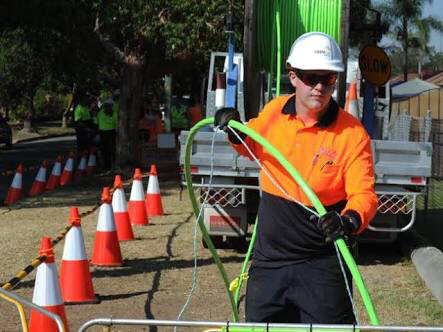F
MatthewDimasi shared a photo from Flipboard
Why is Australia using FTTN to build the national broadband network instead of FTTP? So why exactly is the liberal government instructing NBN Co, the company building this network to use a technology called Fibre to the Node or FTTN to get "fast" broadband speeds to all Australians by 2020? The liberal governments explanation is that it is more cost efficient and will get here sooner then Fibre to the Premises or FTTP. But in theory it isn't worth it at all. First of all let's explain what both of the technologies are. Fibre to the Node is a technology where fibre optic cables run from the Internet exchange and then terminate a a little green box called a node on the end of your street which then goes back to the existing copper network to connect to your home. It delivers speeds of anywhere between 25-100 mega bits per second. But this however depends on how far away you are from the Node. If you are 500 meters away you might not even get 50 megabits a second. Now what is Fibre to the premises or FTTP? Well this is where fibre optic cables run from the Internet exchange and go DIRECTLY TO YOUR HOME. Delivering speeds of 100 megabits per second and in the future, 1 gigabit per second. Now let's explain how this network all started. In 2008 Kevin Rud who was current prime minister of Australia decided that he wanted to build a superior network to connect all of Australia onto by 2017. To do these he would use Fibre optic cables aka FTTP technology. In 2009 a government owned company called NBN Co was founded and they began to roll out FTTP. The rollout however was quite slow as costs and how they were going to build this had not been fully resolved. Come around to 2013 and the FTTP rollout is so far a success. However later that year the liberal government got elected into power and the moment this happened, Tony Abott ordered now communications minister Malcolm Turnbull to dismantle the entire FTTP rollout of the NBN network. They sadly wanted to build this network using FTTN. They said it would be here faster and more cheaper. However by doing this, they have ruined Australia's chance to get world class internet that would be suitable for more then a century. There are many cons about FTTN. The first being is that FTTN is already obsolete and has been abandoned by most of the other countries that used it, in fact Britain said "FTTN was the worst mistake we have made". 2 FTTN is much slower then FTTP, this is mainly because FTTN is highly affected by distance, unlike Fibre, depending on how far away you are from the nodes, you will either get a very fast or horrible NBN internet connection, with Fibre optical cables, speed is not affected by distance. 3 FTTN can be severely affected by weather conditions. Because FTTN still uses the old copper network, it is highly prone to not working in storms or very hot conditions. Fibre optic cables on the other hand are weather proof and are not affected by the weather or network interference. 4 FTTN is much harder to repair and maintain compared to FTTP. With fibre, it is much easier and quicker to access the cables and identify a problem. It is also quick to fix it. Copper on the other hand takes much longer to repair if broken or not functioning fully. In some cases, all the copper in your are may have to be replaced. 5 and probably the most important is that FTTN will not be able to handle the future of our Internet. With the growing demand of bandwidth, FTTN will not be able to handle our future needs as it is not capable of extremely high speeds. Fibre optic cables right now can reach 1 gigabit a second, FTTN can't even reach 1 10th of that speed. And the network will have to be scrapped and upgraded in the years to come. It will be billions of dollars more wasted just evacuate our stupid government decided not to go the better way.
This image was shared from Flipboard,
a fast, beautiful way to flip through the news, photos and updates your
friends are sharing on Facebook, Twitter, Flickr, Google+ and
Instagram.
Free Download!
App Store Badge
